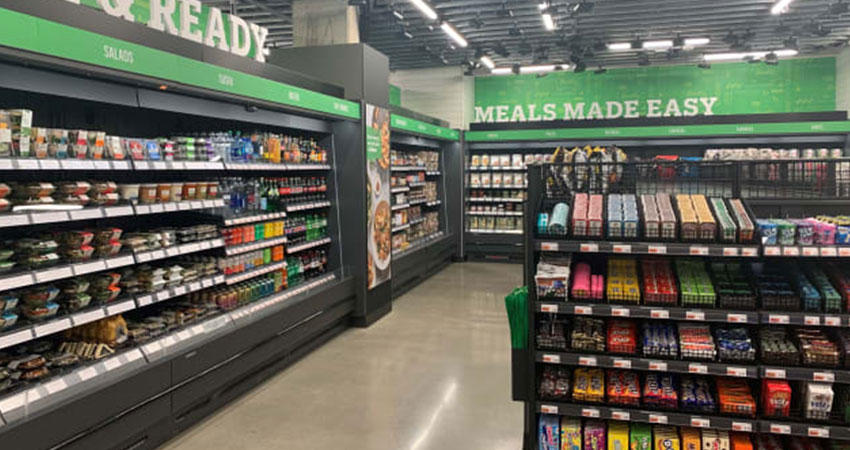Inside an Amazon Go store in Seattle
By NedHayes
Source: multichannelmerchant.com, August 2021
Consumers are bringing their spending back to offline retailers in 2021. Researchers have asked what post-pandemic shopping will look like since last year, and now a retail revival, and a likely boost to in-person retail, has already begun (McKinsey May 2021).
But there will be some big differences between the roaring ‘20s of the last century and this century’s roaring ‘20s. There will be a beneficial technology layer between retailers and customers to help enhance their experience. You can join this momentum.
Here are four key technology trends that your brick-and-mortar store can use to accelerate customer engagement in the coming consumer wave.
Trend 1: Biometrics
Amazon led the way with a unique approach to retail that used ubiquitous cameras and a weight sensor system to document purchases in real time. The Amazon-style system captures every consumer’s action inside the store and deploys computer vision algorithms to determine which consumer has picked up which item. Once a consumer leaves the store, the items are billed to their virtual cart. Other retailers such as CVS, Walmart and Costco are also exploring computer vision technologies.
What’s fascinating about this trend is that with the advent of a new open computer vision framework for retail from vendors like Intel, along with standalone inexpensive cameras from many manufacturers, such a biometric-driven retail scenario may also be within reach for smaller retailers in the near future.
Trend 2: Consumer Scanning
In the past, every grocery purchase involved a checkout person who laboriously touched each item and placed it in a cart. We’re already seeing a change to this process in the new retail revival, with self-checkout systems used by many national grocery store chains.
However, the next iteration of this trend will come when consumers can actually scan items to their own smartphone app while still deep in the store aisles. The era of the register itself may go away as consumers look at barcodes and use built-in scanners on their Android or iPhone devices to save time and increase checkout convenience. Starbucks already allows consumers to scan their own rewards points. Look for this trend to accelerate in the months to come.
Trend 3: Digital Stamp Cards
Physical storefronts have thrived on in-person loyalty programs. For decades, a variety of vendors provided a paper card on which retailers could document points for each visit to eventually gain freebies or discounts. Today, many stores replicate this critical in-person interaction with a digital stamp on an app on the consumer’s smartphone. The technology to support new types of digital stamps ranges from SMS interactions to scanning QR codes to unique touchscreen technologies.
QR codes can be printed anywhere and placed throughout the store, while touchscreen technology can utilize a behind-the-counter digital stamp or a stationary check-in device near the register. Some stores have also taken advantage of Near Field Communications (NFC), which uses a short-range radio transmission of data between a store and a consumer. All three of these technologies allow consumers to safely receive loyalty rewards without interacting with a staff person.
Trend 4: Digital Showrooms
While in-person tradeshows and showrooms weren’t an option last year, retailers were able to move these experiences online and bring them directly to consumers at home. Digital showrooms have been particularly popular with wholesale and fashion brands that depend on product details and well-merchandised inventory to help entice customers.
Digital showrooms allow customers to interact with 3D product images, watch product videos, book an appointment with an associate or make a purchase. Creating a digital showroom may be cost effective for even small retailers by just using videos shot on smartphones and providing quick in-person introductions created on platforms like Instagram and Tik-Tok.
These four trends can help your storefront turn this decade into the new “roaring ‘20s,” encouraging more foot traffic, boosting customer loyalty and engagement and accelerating your revenue as the retail revival takes off.
Ned Hayes is CEO of SnowShoe

